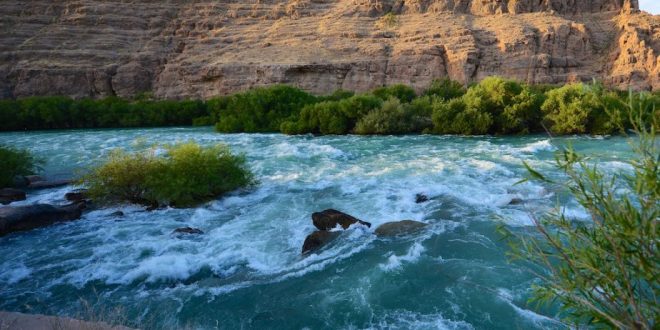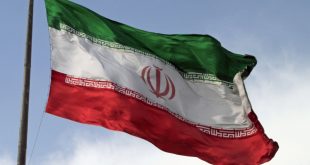Key Points
- Iran and Afghanistan have historically relied heavily on their shared water resources, particularly those in the Helmand River basin.
- A simmering disagreement over water allocation brought on by their shared struggles with drought, climate change, and water mismanagement puts their alliance in jeopardy.
- Even though Iran and Afghanistan do not have the same physical disputes as other nearby countries, these problems’ impact on water supplies has led to tensions and a hydro-political interaction that contains parts of cooperation and conflict.
- It is possible to lessen the impact of future crises like drought, agricultural damage, unemployment, and migration by emphasizing the environmental aspect of foreign policy objectives.
Iran and Afghanistan have historically relied heavily on their shared water resources, particularly those in the Helmand River basin. However, a simmering disagreement over water allocation brought on by their shared struggles with drought, climate change, and water mismanagement puts their alliance in jeopardy.
The Helmand River is essential to both nations’ agriculture, clean water supply, and hydropower generation. Even though Iran and Afghanistan do not have the same physical disputes as other nearby countries, these problems’ impact on water supplies has led to tensions and a hydro-political interaction that contains parts of cooperation and conflict.
Water security is a hazard to all of Iran that needs to be urgently addressed. It is a silent but growing menace. The Iranian government’s lack of a water strategy is evident in its meager to non-existent efforts to reduce water shortages. High-ranking officials on both sides have reacted because of the current escalation in hostilities between Afghanistan and Iran over the Helmand maritime claim. President Ebrahim Raisi and other Iranian authorities have issued warnings, prompting reactions from several American officials.
The former US Special Representative for Afghanistan Peace, Zalmay Khalilzad, expressed his concerns over Iran’s handling of the water issue on Twitter. He emphasized their aggressive language and their treatment of Afghanistan as an enemy. Iran is currently attempting to use its might to stop the development of Afghanistan’s water resources. The Taliban’s failure to manage water resources, rising climatic variability, and Iran’s slow and ineffective adaptation to the new reality would complicate the grim situation.
Historical Background
The study’s findings on historical hydro-political ties between Iran and Afghanistan regarding the distribution of Helmand River water show that, throughout previous eras, the third-party countries’ involvement has deteriorated the state of hydro-political interactions. The Helmand River, a small part of the water supply for Sistan province, has been a source of numerous challenges between Tehran and Kabul over Iran’s water rights from the Helmand.
These challenges have brought about significant problems for this region’s people over the decades. Notably, the gradual drying of Hamoun wetlands, which started in the early 1990s and has intensified in recent years, has created a foundation for adverse changes in the Sistan region’s ecosystem. These events occur when, based on satellite information, the precipitation in the upstream basin of the Helmand River has not decreased over the past 33 years, and the provisions of the 1972 treaty regarding Iran’s water rights have not been fulfilled.
Under the 1973 Helmand River Treaty, Afghanistan is required to deliver water to Iran from the Helmand River at 22 cubic meters per second annually, plus an additional four cubic meters per second for “goodwill and brotherly relations.” Under normal circumstances, this would provide Iran with an average annual supply of 820 million cubic meters, or 556,000 acre-feet. The treaty attempted to control how both countries used their shared water resources. It provided a framework for collaboration and included clauses on water distribution and the development of infrastructure initiatives.
Current Tension
Given the numerous advantages it offers Afghanistan, the Khan Dam is of utmost significance. Improving irrigation is its primary goal, as it increases agricultural productivity and food security. In addition, the dam produces hydropower, addressing energy shortages and promoting economic expansion. Overall, the Khan Dam is essential for addressing the problems with energy and water, fostering development, and enhancing Afghans’ quality of life.
Iran accuses Afghanistan of violating its water rights, arguing that far less water than the amount agreed in a 1973 treaty flows into Iran. Afghanistan rejects the accusation. However, the Afghan government built a dam on the Helmand River on the border with Iran. The Kamal Khan Dam opened in March 2021 after a lengthy construction period. According to Tehran, the dam will significantly reduce Helmand River’s flow.
According to the Iranian media, more water has been flowing into Iran again since the Taliban took power. At Kamal Khan Dam, the Taliban allegedly opened more shops, but neither Kabul nor Tehran has yet provided an official confirmation. A comparison study of Afghanistan’s water-based development approach reveals a similar pattern. To forge a national identity, the statesmen and leaders of this nation have frequently stressed water resources in their speeches, political actions, and governmental performance.
In March 2021, former Afghan President Ashraf Ghani stated that while Afghanistan was still committed to the 1973 treaty, “anything beyond the stipulated quota” necessitated further debate. He proposed that Iran give his nation oil in exchange for additional water from the Helmand River.
Water scarcity is a significant issue in the area, especially in light of the region’s growing population, the effects of climate change, and its restricted water supply. Afghanistan depends mainly on its rivers, including the Amu Darya and the Helmand River, for electricity, agriculture, and drinking water access. Iran has its own water-related problems, such as scarcity and drought, and shares these rivers with other countries.
According to an Iranian diplomat, government agencies are seeking Iran’s water rights from Afghanistan’s Helmand River, hoping the long-running conflict between the two neighbors will be resolved this year. Hassan Kazemi-Qomi, the Iranian ambassador to Kabul and the president’s special envoy for Afghanistan affairs, encouraged the Afghan government to put the 1973 Helmand River Treaty into effect while on a television program on Monday.
The Afghan government has pledged its adherence to the pact and is committed to it as a legal matter. The deal must also be put into effect, he added. The future course of the Iran-Afghanistan water dispute is yet unknown, and the complexity of the problem is exacerbated by the growing scarcity of water and opposing demands.
Potential Resolutions
Several obstacles prevent a resolution to the Iran-Afghanistan water conflict. One significant issue is the region’s lack of water supplies, made worse by climate change and recurring droughts. Bilateral discussions and joint actions are potential answers to the Iran-Afghanistan water dilemma. Diplomatic communication is an option to develop ideas that benefit both nations. A few examples are agreements on water allocation, sharing, and collaborative management of water resources.
International mediators or facilitators could also assist in bridging the gaps and offering unbiased direction to conclude. Investments in water infrastructure, such as reservoirs or irrigation systems, can also help reduce conflict and promote more effective water use. Iran and Afghanistan can strive to resolve the water problem and ensure sustainable water management for the future by following these options.
The future trajectory of the Iran-Afghanistan water dispute and potential resolutions can be examined through two main dimensions. The first dimension relates to how each nation manages its own internal water resources. This requires dealing with internal issues, including managing rainfall, updating infrastructure, controlling water use, and managing land for agriculture and industries.
The second facet of environmental diplomacy focuses on water-related issues. Given the importance of climate change and water shortages, it is crucial to prioritize environmental diplomacy when resolving water-related issues. This entails incorporating environmental concerns into foreign policy goals, addressing international legal flaws, and stopping arbitrary actions by upstream governments that disrespect the rights and harm downstream nations.
It is possible to lessen the impact of future crises like drought, agricultural damage, unemployment, and migration by emphasizing the environmental aspect of foreign policy objectives. To promote fair water resource management practices, legislative evaluations and equitable sharing arrangements for border waters with neighboring nations should also be given priority.
Conclusion
International organizations should work with technical subject matter specialists on both sides to investigate the issue and develop workable solutions. Politicians that are wise and forward-thinking should recognize the common interests of each nation. Both parties must communicate with each other at the level of governmental decision-makers and with academic, scientific, and civil organizations.
The leaders of the nations should recognize that the concerns with the Helmand River and Hamoun Lakes are not just domestic problems but regional issues that can only be tackled jointly. Iran plans to use the political upheavals in Afghanistan and the Taliban’s ignorance to grab water from the Helmand River. Relying only on the Committee of Ministers might obstruct development and result in arbitration or outside interference. Due to their scarce resources and reliance on the river, the Taliban may be dissuaded from cooperating with Iran.
Resident participation in a benefit-sharing strategy can promote collaboration and alleviate trust difficulties. Repatriating Afghan migrants is an illegal and counterproductive provocation. Diplomacy, professional discussion, and technical study are required to solve water difficulties. Exploiting humanitarian concerns or employing military jargon makes things worse. It takes subtlety, diplomacy, and focusing on shared interests to arrive at a long-lasting solution.





